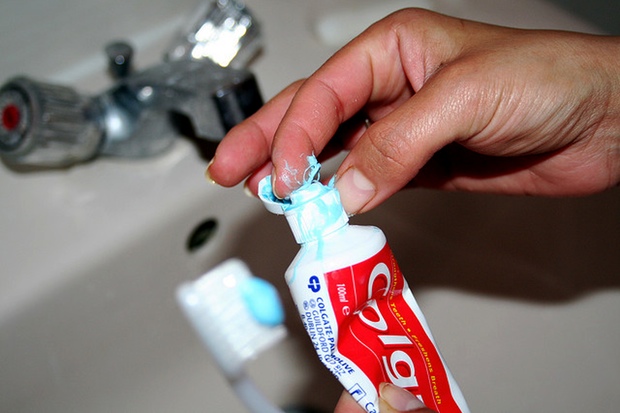Regardless of whether we choose to follow it, we all know the drill of taking care of our chompers: Brush twice a day, floss, and see a dentist every six months.
Now, there’s another promising method to add to the list: Massage your teeth.
Rubbing high-fluoride toothpaste on your teeth once a day can increase protection against tooth decay by 400 percent compared with standard toothpastes, according to a study conducted by researchers at the University of Gothenburg in Sweden. The findings come as welcome news, especially after the alarming New York Times article that reported the rise of out-of-control cavities and tooth decay among preschoolers.
Dr. Angela Austin of Alexandria Children’s Dentistry says she started recommending the massaging technique to adults and certain high-risk patients six months ago. “Massaging the toothpaste on the teeth allows the fluoride to stay on topically a bit longer [than brushing],” she explains.
The study’s researchers recommend rubbing the front of your teeth with toothpaste after lunch and continuing to brush your teeth in the morning and at night. The massage technique works just as well as brushing your teeth for a third time during the day, they said.
Adds Austin: “It’s great for protection, but it’s imperative that people still brush at least two times daily in addition to this for adequate plaque removal.” Also important: Rinsing with water afterward cancels out the benefits, so apply the coating and let it sit for 30 minutes or so.
In the US, most over-the-counter toothpaste contains 1,000 to 1,450 parts per million of fluoride. In the study, participants used Swedish-based toothpaste that contained more than three times as much fluoride as standard toothpaste. Austin explains that a dentist can prescribe a fluoridated toothpaste that’s up to 5,000 ppm.
Austin warns that the massage method should only be used by children if their dentist recommends it. “Children have more specific requirements for fluoride recommendations, and doing this method on a child who doesn’t need it may actually cause problems,” she says.
One problem could be the development of fluorosis, which is a disturbance of dental enamel that occurs as a result of overexposure to fluoride.
Still, for those who are prone to dental decay–patients who have decreased saliva content or poor oral hygiene, or who live in a non-fluoridated-water community–it’s likely that more dentists will start recommending this method to help keep teeth cavity-free.


















